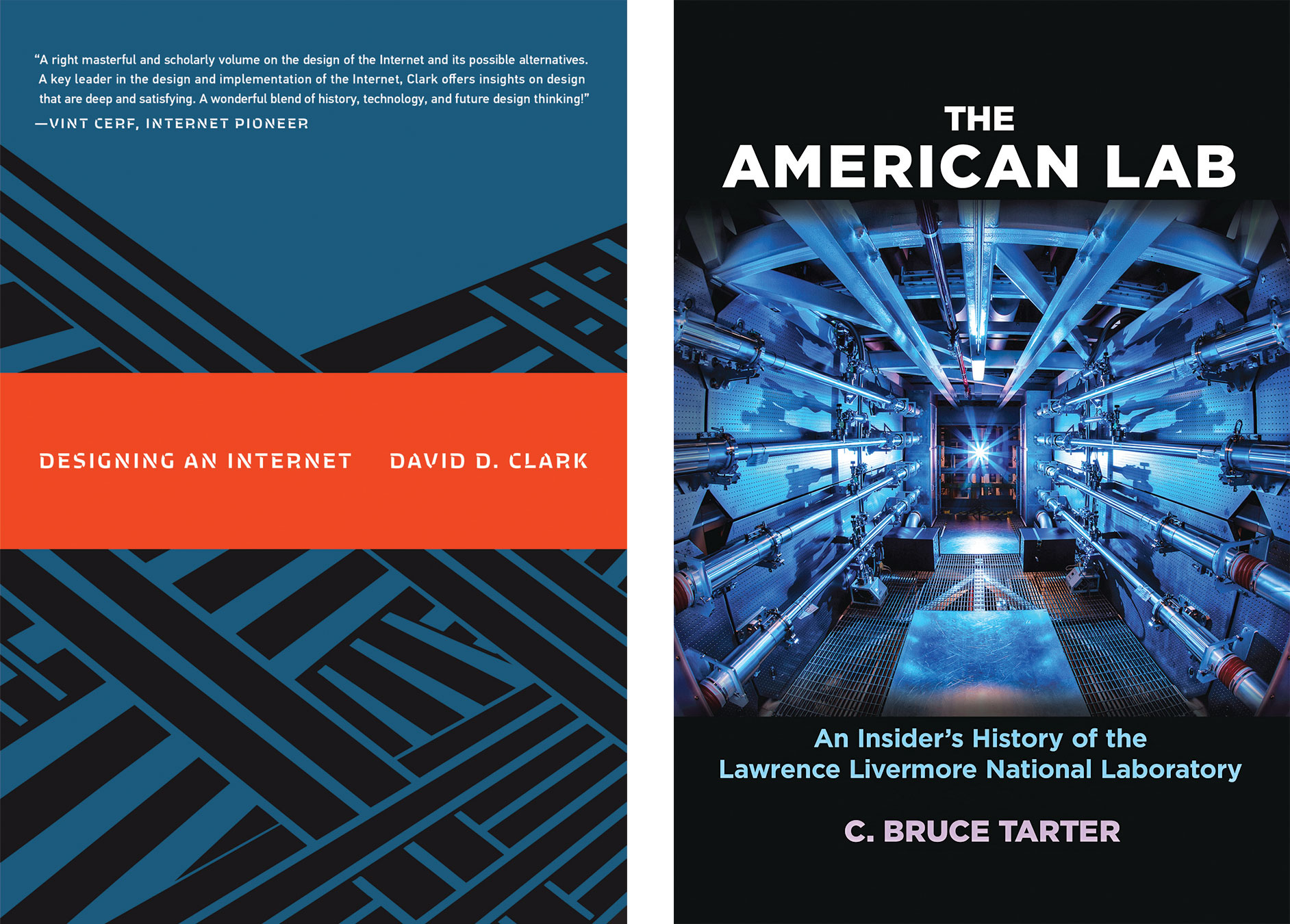Internet evolution and a uniquely American lab

We may take the ease and accessibility of the internet for granted, but as internet pioneer and CSAIL senior research scientist David Clark, EE ’68, SM ’68, PhD ’73, observes in Designing an Internet (MIT Press, 2019), the final outcome was far from predetermined.
“The internet we have today is based on specific decisions we made,” says Clark. But he notes that an internet could have been any number of other things. “Maybe there are forks in the road in the future,” he says. “Who knows what the internet will turn into.”
Aimed at both technologists and enthusiastic novices, Clark’s book explores the fundamental architecture of the internet as we know it today, as well as alternative designs that have yet to see the light of day. But as we address the internet challenges of the future, Clark says, the crusade will no longer be led by engineers in search of optimization.
“If we make everything inside one app, then it’s much more integrated, the experience is seamless, and [users think] ‘I’ve given incredible control of my life to one company!’ What do we do about that?” he says. “That’s not a technical question.” Answering it will mean delving into economics as well as societal, regulatory, and political concerns. So despite the ubiquity of the internet in modern life, he says, “technologists are not in control of the future.”
Today we know Silicon Valley as a veritable field of dreams for startups, but in The American Lab (Johns Hopkins University Press, 2019), the former director of Lawrence Livermore National Laboratory, C. Bruce Tarter ’61, recounts how a culture that valued debate, questioning, and passion made Livermore not only the first successful startup in the San Francisco Bay Area but a uniquely American lab.
“A typical [scientist at the lab] would be someone who had gone to a small liberal arts college in the Midwest, caught a Greyhound bus, and showed up in Berkeley as a graduate student or maybe an engineer,” Tarter says.
The book recounts the lab’s nearly seven decades through the voices of some of its most influential scientists, following it through the nuclear and Cold War era to its transition from a University of California, Berkeley, lab to a public-private consortium in 2008. Tarter notes that a seminal event took place closer to MIT’s campus than Berkeley’s when Edward Teller, then the lab’s associate director, proposed launching nuclear missiles from the tops of submarines during a conference at Woods Hole.
“That particular invention changed the entire Cold War,” says Tarter. “It was almost a hot war—or a very warm war—but [with that invention] it was pretty stable for the next many years until the Cold War ended.”
Recent books from the MIT community
Entrepreneurial Negotiation: Understanding and Managing the Relationships That Determine Your Entrepreneurial Success
By Lawrence Susskind, MCP ’70, PhD ’73, professor of urban and environmental planning, and Samuel Dinnar
Palgrave Macmillan, 2018, $37.99
Empire of Letters: Writing in Roman Literature and Thought from Lucretius to Ovid
By Stephanie Ann Frampton, associate professor of literature
Oxford University Press, 2019, $74
Time-Dependent Quantum Mechanics of Two-Level Systems
By James P. Lavine ’66
World Scientific Publishing, 2019, $98
Beyond Product: How Exceptional Founders Embrace Marketing to Create and Capture Value for Their Business
By Jill Soley ’92, MBA ’02, and Todd Wilms
Morgan James, 2019, $17.95
Prescription for Bankruptcy: A Doctor’s Perspective on America’s Failing Health Care System and How We Can Fix It
By Edward Hoffer ’65
Omni Press, 2018, $15.95
Formal Verification of Floating-Point Hardware Design: A Mathematical Approach
By David M. Russinoff ’71
Springer, 2018, $99.99
Send book news to MIT News at
MITNews@technologyreview.com or
1 Main Street, 13th Floor Cambridge, MA 02142
Keep Reading
Most Popular
Large language models can do jaw-dropping things. But nobody knows exactly why.
And that's a problem. Figuring it out is one of the biggest scientific puzzles of our time and a crucial step towards controlling more powerful future models.
The problem with plug-in hybrids? Their drivers.
Plug-in hybrids are often sold as a transition to EVs, but new data from Europe shows we’re still underestimating the emissions they produce.
Google DeepMind’s new generative model makes Super Mario–like games from scratch
Genie learns how to control games by watching hours and hours of video. It could help train next-gen robots too.
How scientists traced a mysterious covid case back to six toilets
When wastewater surveillance turns into a hunt for a single infected individual, the ethics get tricky.
Stay connected
Get the latest updates from
MIT Technology Review
Discover special offers, top stories, upcoming events, and more.